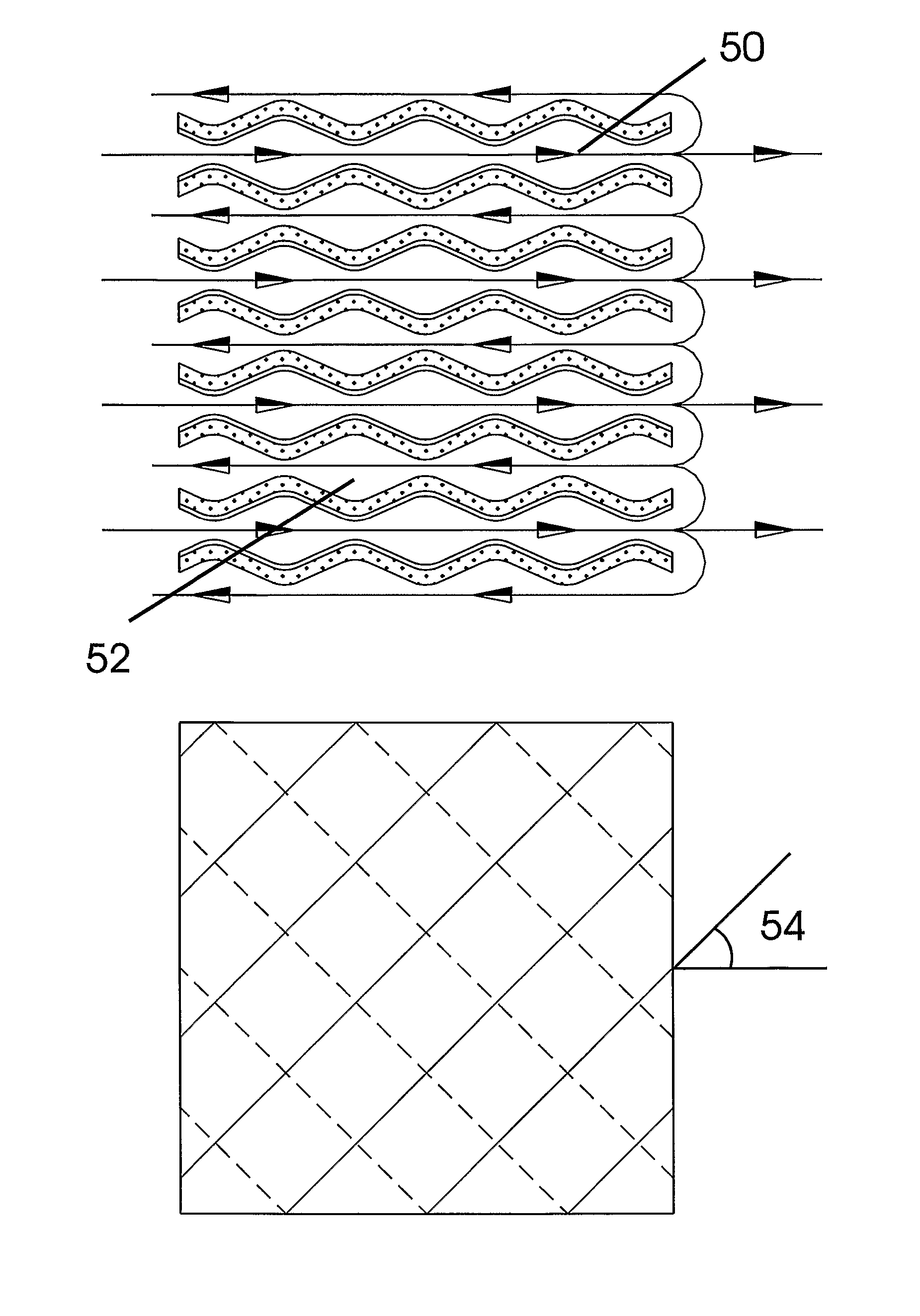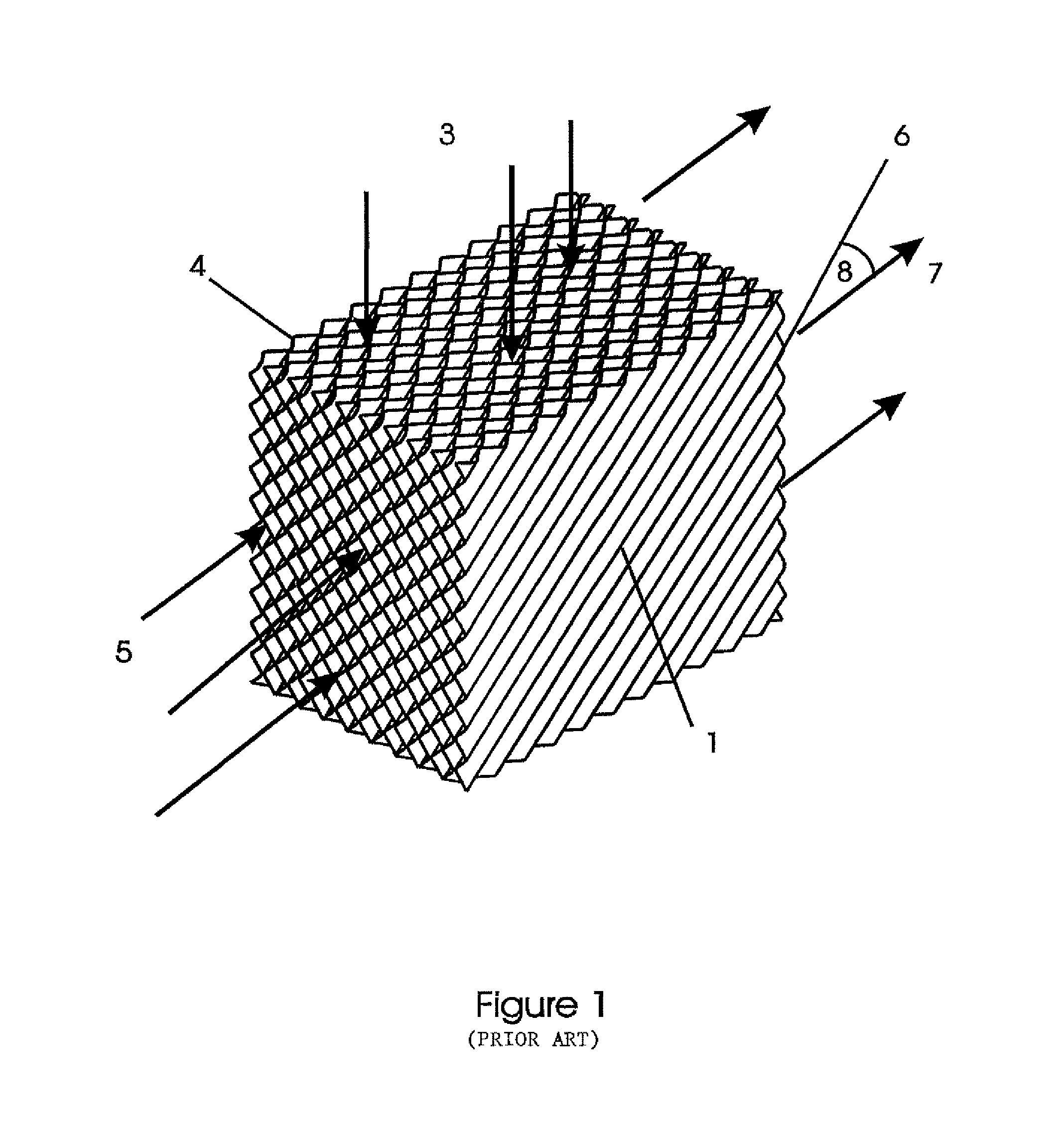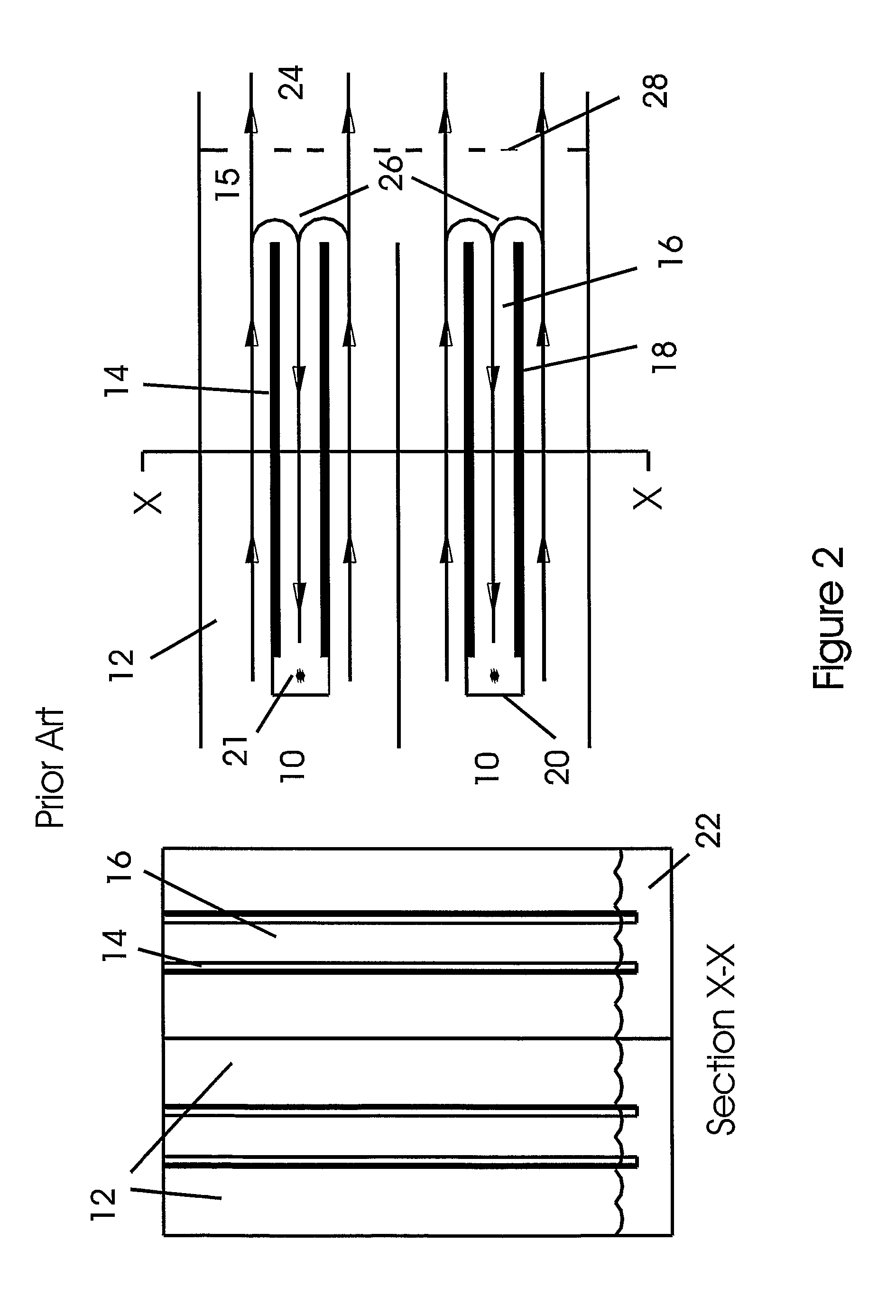Method and materials for improving evaporative heat exchangers
a heat exchanger and evaporative technology, applied in the direction of trickle coolers, free-cooling systems, combustion air/fuel air treatment, etc., can solve the problems of limiting the degree of cooling available, limiting the use of this cooling method, and construction suffering a number of deficiencies
- Summary
- Abstract
- Description
- Claims
- Application Information
AI Technical Summary
Benefits of technology
Problems solved by technology
Method used
Image
Examples
Embodiment Construction
[0042]In FIG. 1, the prior art corrugated media is shown as a block of sheets of corrugated, wettable media within which dry air and water on the wetted surfaces interact. The block 1 is constructed from individual sheets 4 of corrugated media (typically treated paper of a type which readily wicks water along its surface). Individual corrugations 6 are impressed in the media during manufacture and the sheets arranged such that the corrugations are set at an angle 8 to the edges of the block of media. Adjacent sheets 4 are typically glued together with reversed corrugation angles creating complex air and water passages within the matrix of the block.
[0043]In operation, water is introduced in the direction 3 and applied to the top surface of the block of media. As the water 3 descends through the matrix, it encounters numerous points within the matrix where the corrugations 6 of adjacent sheets 4 meet. At each of these intersection points, part of the water is directed one way around ...
PUM
 Login to View More
Login to View More Abstract
Description
Claims
Application Information
 Login to View More
Login to View More - R&D
- Intellectual Property
- Life Sciences
- Materials
- Tech Scout
- Unparalleled Data Quality
- Higher Quality Content
- 60% Fewer Hallucinations
Browse by: Latest US Patents, China's latest patents, Technical Efficacy Thesaurus, Application Domain, Technology Topic, Popular Technical Reports.
© 2025 PatSnap. All rights reserved.Legal|Privacy policy|Modern Slavery Act Transparency Statement|Sitemap|About US| Contact US: help@patsnap.com



